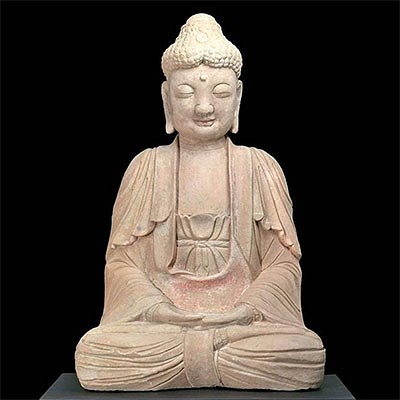Large Gila Polychrome Pottery Olla
Lot 138a
About Seller
Artemis Fine Arts
686 S Taylor Ave, Ste 106
Louisville, CO 80027
United States
Selling antiquities, ancient and ethnographic art online since 1993, Artemis Gallery specializes in Classical Antiquities (Egyptian, Greek, Roman, Near Eastern), Asian, Pre-Columbian, African / Tribal / Oceanographic art. Our extensive inventory includes pottery, stone, metal, wood, glass and textil...Read more
Estimate:
$3,000 - $4,500
Absentee vs Live bid
Two ways to bid:
- Leave a max absentee bid and the platform will bid on your behalf up to your maximum bid during the live auction.
- Bid live during the auction and your bids will be submitted real-time to the auctioneer.
Bid Increments
| Price | Bid Increment |
|---|---|
| $0 | $25 |
| $300 | $50 |
| $1,000 | $100 |
| $2,000 | $250 |
| $5,000 | $500 |
| $10,000 | $1,000 |
| $20,000 | $2,500 |
| $50,000 | $5,000 |
| $100,000 | $10,000 |
| $200,000 | $20,000 |
About Auction
By Artemis Fine Arts
Feb 18, 2021
Set Reminder
2021-02-18 10:00:00
2021-02-18 10:00:00
America/New_York
Bidsquare
Bidsquare : Exceptional Antiquities, Asian, Ethnographic
https://www.bidsquare.com/auctions/artemis-gallery/exceptional-antiquities-asian-ethnographic-6373
Museum-worthy examples of Egyptian, Greek, Roman, Etruscan, Near Eastern, Far East / Asian, Pre-Columbian, African / Tribal, Oceanic, Native American, Spanish Colonial, Russian, Fossils, Ancient Jewelry, Fine Art, so much more! Artemis Fine Arts info@artemisfinearts.com
Museum-worthy examples of Egyptian, Greek, Roman, Etruscan, Near Eastern, Far East / Asian, Pre-Columbian, African / Tribal, Oceanic, Native American, Spanish Colonial, Russian, Fossils, Ancient Jewelry, Fine Art, so much more! Artemis Fine Arts info@artemisfinearts.com
- Lot Description
North America, Southwest, Southeastern Arizona, Anasazi / Ancestral Pueblo, Greater Mogollon, Greater Salado, Upper Gila (Highland Salado), ca. 1300 to 1450 CE. A stunning and quite sizeable Gila Salado effigy vessel, hand-coiled and smoothed from a red clay. Sitting upon a flat base, the overall form presents with impressively thin walls that rise up to a broad, rounded shoulder, then taper inwards to a narrow, cylindrical neck, a gently flared rim, and an annular mouth. The vast majority of the russet-hued surface is painted with black and cream intricate design motifs: a large band around the shoulder of spiraling, undulating, rectangular, and circular forms and striations and mesmerizing geometric pattern on the neck. A beautiful example, so finely hand-built and decorated! Size: 14.25" in diameter x 10.25" H (36.2 cm x 26 cm)
There are three recognized styles of Salado polychrome pottery: Pinta, Gila, and Tonto. Gila vessels like this example were often decorated with complex designs, at times featuring stylized snakes, lizards, parrots, stars, the sun, and eyes. Many of these images also appear in petroglyphs. The Salado (Spanish for "salty") peoples migrated to the Salt River in Southeastern Arizona. They resided in the center of three major cultures of the Southwest of the time period: Anasazi to the North, Mogollon to the East and South, and the Hohokam to the West and Southwest.
Provenance: private New Jersey, USA collection; ex-Robert Whiteside collection, purchased from R. G. Munn Auctions, San Diego, California, USA in October 2000
All items legal to buy/sell under U.S. Statute covering cultural patrimony Code 2600, CHAPTER 14, and are guaranteed to be as described or your money back.
A Certificate of Authenticity will accompany all winning bids.
We ship worldwide and handle all shipping in-house for your convenience.
#162375Repaired from several pieces. Collection label on base. Expected surface wear as shown. Otherwise, very nice with impressive remains of pigment.Condition
- Shipping Info
-
All shipping is handled in-house for your convenience. Your invoice from Artemis Gallery will include shipping calculation instructions. If in doubt, please inquire BEFORE bidding for estimated shipping costs for individual items.
-
- Buyer's Premium



 EUR
EUR CAD
CAD AUD
AUD GBP
GBP MXN
MXN HKD
HKD CNY
CNY MYR
MYR SEK
SEK SGD
SGD CHF
CHF THB
THB
















